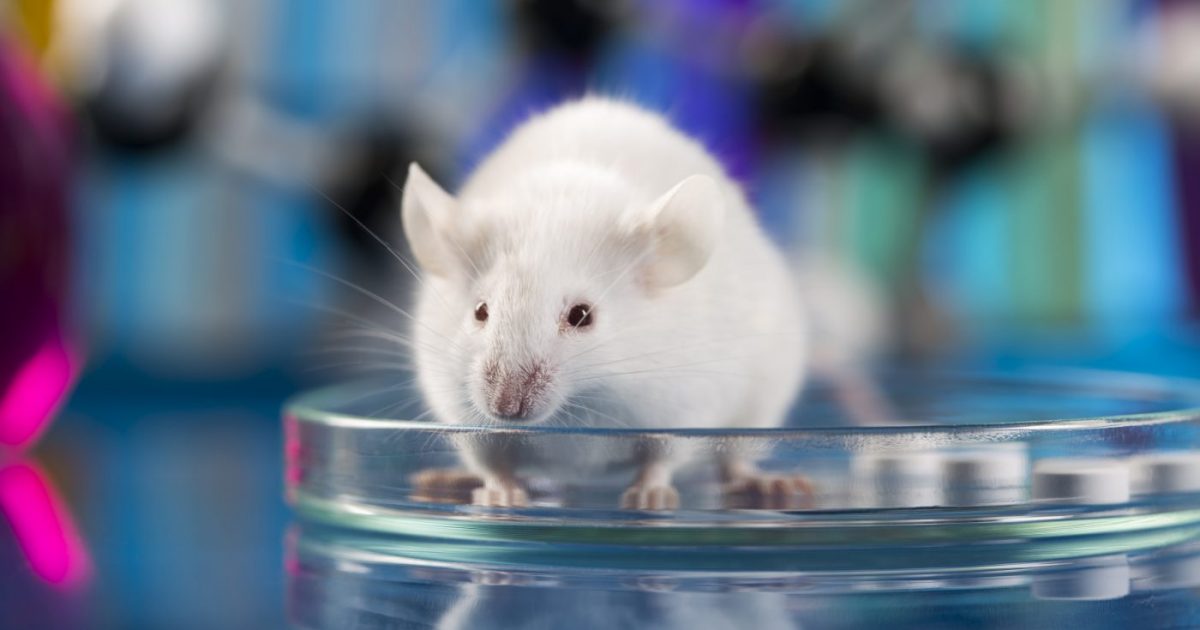

In mouse models of lung cancer and fibrosis, a combination of Esbriet (pirfenidone) and anti-PD-L1 therapy strengthened an anti-tumor immune response and reduced tumor growth, while also easing pulmonary scarring in the animals.
This combination therapy might be useful in treating lung cancer that develops in people with idiopathic pulmonary fibrosis (IPF), and further testing is warranted, the research team wrote.
IPF, a progressive disease characterized by scarring (fibrosis) and damage to the lungs, is associated with an increased risk of lung cancer. In turn, lung cancer can worsen IPF’s course, and common lung cancer treatments such as surgery and chemotherapy can exacerbate this lung disease.
Therapies that block the programmed death-ligand 1 (PD-L1) are common lung cancer treatments, but their efficacy may be complicated by pre-existing IPF.
“An optimal therapeutic strategy for patients with both diseases is sorely needed,” the research team in Hubei, China, wrote.
Esbriet, marketed by Genentech, is an approved oral IPF treatment. Previous research by this study’s team demonstrated that the therapy lessened radiation-induced fibrosis and signaling of TGF-beta, an important fibrosis mediator.
Other studies also report that Esbriet’s use boosted immune response and attenuated the growth of fibroblasts, cells that contribute to fibrosis, in IPF patients.
Hypothesizing that anti-fibrotic Esbriet might enhance the tumor-suppressing efficacy of anti-PD-L1, the researchers investigated combining these treatments in a tumor mouse model, with and without pulmonary fibrosis.
In mice with induced tumor growth, Esbriet’s use promoted tumor regression, suppressed TGF-beta signaling, and induced an anti-tumor immune response by increasing the density of immune defense cells and the expression of immune-associated genes.
Interestingly, in cells with lesser TGF-beta expression, Esbriet failed to slow tumor growth, indicating that the therapy’s anti-tumor response is partly mediated by TGF-beta signaling.
In three mouse tumor models, the combination of anti-PD-L1 therapy and Esbriet induced an enhanced anti-tumor response compared to either treatment alone. The combination therapy significantly delayed tumor growth and reduced tumor size, while also prolonging mouse survival.
An anti-PD-L1 plus Esbriet combination induced the expression (activity) of more immune-related genes than either monotherapy. The unique gene expression profile of the combo therapy included elevated expression of immune signaling proteins and promoted an increased infiltration of immune T-cells to the tumor site.
In the tumor-fibrosis mouse model, anti-PD-L1 plus Esbriet significantly reduced signs of pulmonary fibrosis compared to both non-treated mice and mice given an anti-PD-L1 in combination with galunisertib, an oral TGF-beta blocker with demonstrated anti-tumor effects. The Esbriet combination also induced a pronounced tumor regression effect, significantly stronger than that induced by the galunisertib combination.
Overall, study results show that an anti-PD-L1 and Esbriet combination promotes an enhanced anti-tumor and anti-fibrotic effect. No signs of toxicity or tissue damage were observed in treated mice.
“Our results collectively demonstrated that pirfenidone facilitated antitumor immunity and enhanced the efficacy of PD-L1 blockades. It may act as an adjuvant to immunotherapy in cancer treatment, particularly, in lung cancer patients with preexisting IPF,” the researchers wrote.
These “initial findings encourage … further clinical trials to determine the efficacy of the combination,” the team added.
Among the study’s limitations were an inability to measure other immune cell types, and the lack of a robust treatment response in immunocompromised mice (mice with a defective immune system), which should be considered if the treatment is combined with immunosuppressive therapy.
“The exact molecular mode of action of [Esbriet] on immune activation is still a question needed to be further explored,” the researchers wrote.
more recommended stories
 Safer Allogeneic Stem Cell Transplants with Treg Therapy
Safer Allogeneic Stem Cell Transplants with Treg TherapyA new preclinical study from the.
 Autoimmune Disorders: ADA2 as a Therapeutic Target
Autoimmune Disorders: ADA2 as a Therapeutic TargetAdenosine deaminase 2 (ADA2) has emerged.
 Kaempferol: A Breakthrough in Allergy Management
Kaempferol: A Breakthrough in Allergy ManagementKaempferol, a dietary flavonoid found in.
 Early Milk Cereal Drinks May Spur Infant Weight Gain
Early Milk Cereal Drinks May Spur Infant Weight GainNew research published in Acta Paediatrica.
 TaVNS: A Breakthrough for Chronic Insomnia Treatment
TaVNS: A Breakthrough for Chronic Insomnia TreatmentA recent study conducted by the.
 First-of-Its-Kind Gene-Edited Pig Kidney: Towana’s New Life
First-of-Its-Kind Gene-Edited Pig Kidney: Towana’s New LifeSurgeons at NYU Langone Health have.
 Just-in-Time Training Improves Success & Patient Safety
Just-in-Time Training Improves Success & Patient SafetyA study published in The BMJ.
 ChatGPT Excels in Medical Summaries, Lacks Field-Specific Relevance
ChatGPT Excels in Medical Summaries, Lacks Field-Specific RelevanceIn a recent study published in.
 Study finds automated decision minimizes high-risk medicine combinations in ICU patients
Study finds automated decision minimizes high-risk medicine combinations in ICU patientsA multicenter study coordinated by Amsterdam.
 Study Discovers Connection Between Omicron Infection and Brain Structure Changes in Men
Study Discovers Connection Between Omicron Infection and Brain Structure Changes in MenA recent study in the JAMA.

Leave a Comment